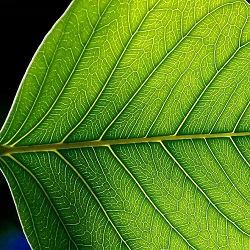The build-up of global CO2 levels has well-known environmental consequences. It is also a great waste of a potential resource. I am aiming to close the carbon loop by connecting the air to a fuel tank.
When we burn fossil fuels, CO2, water and energy are released. My research is into how to efficiently reverse this process by recombining combustion products to form a fuel. First, we need an energy source. Since burning more fuel would be counterproductive, we need to use renewable sources of energy such as wind and solar. These are potentially limitless sources of energy in the form of electricity. Next, we need to find a way of converting this electrical energy in chemical energy. For this we need a sophisticated chemical machine – a catalyst.
Understanding how to make a catalyst which can efficiently convert CO2 to fuel using common materials is my particular focus. It needs to be a material which allows energy to flow freely whilst being porous or sponge-like to allow lots of area for reactions to occur. It also needs to be able to react with CO2. Certain metals and their compounds can do the first two jobs quite well, and are very cheap and abundant. It is possible to create intricate networks in these materials, like tiny caves, which give them a high surface area for their weight.
The second job, reacting with CO2, is more difficult. To achieve this we must take inspiration from nature. Some bacteria can make a catalyst called FDH (or to give it it’s long name, formate dehydrogenase). This is a biological catalyst, an enzyme, which can turn CO2 into formate, a molecule similar to acetic acid found in vinegar. By understanding how this enzyme works I can develop new catalysts which can be attached to the surface of metal oxides to lend their CO2 converting ability.
This is fundamental research, so creating fuel from thin air is still a few years off. However, it is conceivable that our future transport system will be run on sustainable carbon fuels derived from this free and abundant source.
Will Robinson
NanoDTC PhD Student Cohort 2012
Reisner Lab, ChemistryThin Films and Interfaces Group, PhysicsCover photo from JPM Online

